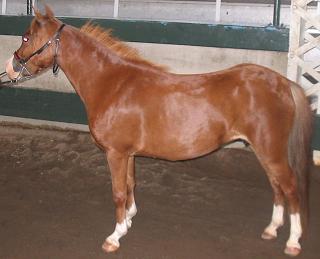Type the name of the breed you're looking for below
[wpdreams_ajaxsearchlite] Don't see the breed your're looking for? Click here and let us know!
American Shetland Pony
| Country Of Origin | United States |
| History and Background | The original Shetland pony came from the Shetland Isles in Scotland, whence its name, and was brought to the United States in the 19th century. Some of the Shetland ponies from the Shetland Isles were preserved and bred; these are the classic American Shetland we know today. Some of the Shetland ponies, however, were interbred with other breeds like the Welsh and the Hackney ponies. This interbreeding resulted in the modern American Shetland, which is generally of a slimmer build than the classic stock. In 1888, the American Shetland Pony Club was established to record and document the American Shetland breed -- both the pure Shetland breed, and the Shetland with at least 50 percent pure Shetland blood. |
| Use Today | Show ponies, Harness sulkies, Hackney pony, Hunter/ jumper |
| Height | 11.5 hands high ( 46 inches or 117 centimeters) |
| Colour | Any colour |
| Characteristics | The Classic Shetland is hardier than its Modern relative. It was originally bred as a work horse, for pulling coal and loads for mining work, so it is chunkier and more muscular than the modern breed. The Modern American Shetland is generally trimmer and has smoother muscle formation. Its neck is arched, its head is carried higher and its body is slimmer. Both types, however, have exceptionally sturdy hooves. The American Shetland generally has a small head and short ears. The eyes are widely spaced and the muzzle is proportionally small. The neck is short and muscular, although as mentioned above, the modern breed has a more highly arched neck. The coat is thick, with the usual equine colors being found in both Shetland standards. American Shetland Types As with many breeds brought to the Americas, landing on a new continent changed the course of their future. Breeders in different areas & disciplines required different types of animals. The American Shetland Pony Club recognizes four different types of ponies in their registry. Modern The tallest type of the breed, the modern type has a high head & tail sets with fancy high-stepping action. Pleasure Similar in conformation to the Modern type, but their action is more subdued. Classic Perhaps the most common type, Classic Shetlands share the refined conformation of their counterparts without any flashy action. Foundation Foundation Shetlands remain closer to their British roots, they do not have any Hackney influence (for four generations) & must be under 42″ tall. |
| Personality and Temperament | The American Shetland is known for its gentle nature and agreeable disposition, as well as being an intelligent and able learner. It is well regarded for its hardiness and athleticism. As such, the American Shetland is an ideal mount for children and for people with disabilities. With these qualities in mind, in addition to their fine carriage, the American Shetlands and their much flashier and taller variants, are ideal for horse shows. |



